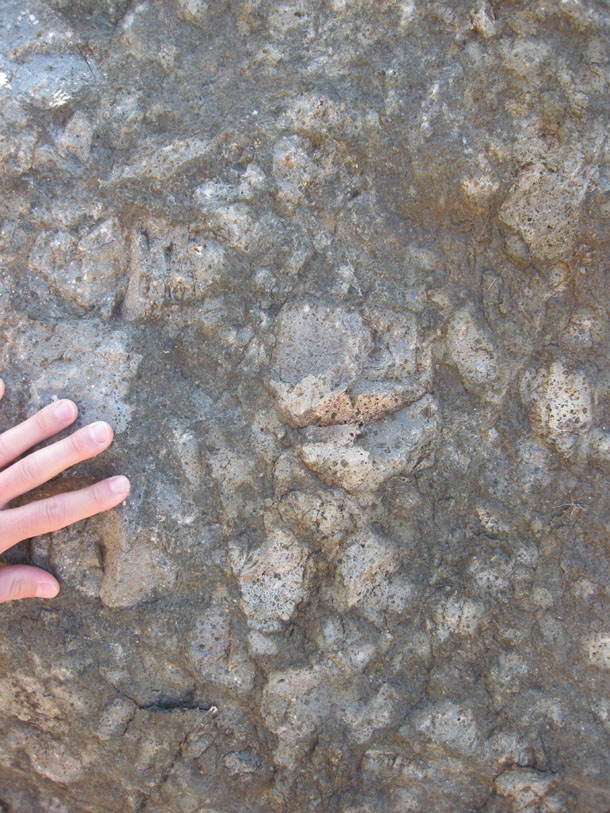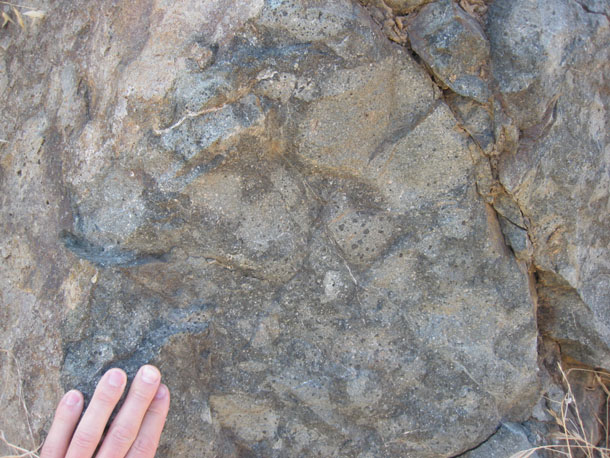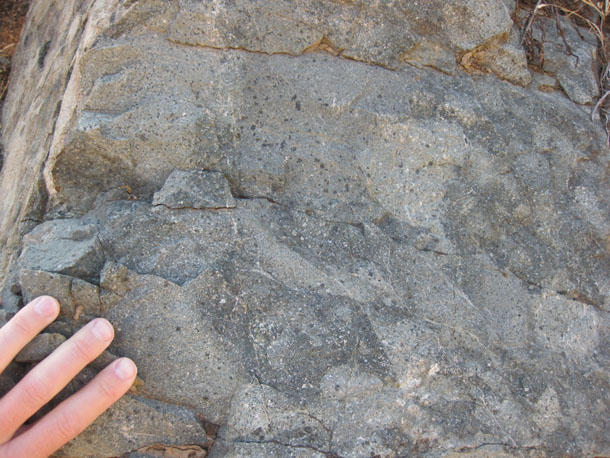A year and a half ago, on my way back to Modesto from Yosemite, I pulled over at the side of the road and found a piece of urbanite full of whoppers. But that curiosity wasn’t what caught my eye and made me pull over in the first place. Instead, what I noticed was this:


It appears to be some kind of volcanic breccia, based on the relatively angular clasts and the presence of vesicles (amygdules). I reckon it could be a survivor of the extrusions of the Sierra Nevada magmatic arc when it was actively erupting in the late Mesozoic. The frozen roots of those volcanoes are today exposed as the granitic plutons of the Sierra Nevada batholith.



But at some point, those volcanoes were burping lava out onto the surface, and potentially triggering lahars and ashflows and those extrusive rocks may be preserved in a few low-lying places were erosion hasn’t yet dispatched them. Is this one?
Here’s the exact location of the outcrop, on the west side of the road. I defer to the local geologist for insights…

There’s also some Miocene lahar deposits in the region, but mostly in the northern Sierra … not sure about this location. As you note, Gary will certainly know.
These pics are most likely the Jurassic Penon Blanco volcanics, part of a sequence of accreted island arc volcanics (online map at http://www.quake.ca.gov/gmaps/RGM/sfsj/sfsj.html ). Brian is certainly right, though, that there are Miocene volcanic breccias in the region, along the road a little further to the north and west.
http://www.quake.ca.gov/gmaps/RGM/sfsj/sfsj.html
The first link I put doesn’t work, try this, and if it doesn’t work, look for the San Francisco/San Jose map link down the page at http://www.consrv.ca.gov/cgs/information/geologic_mapping/Pages/googlemaps.aspx
It looks like a weakly metamorphosed andesitic “flow breccia.” Neat!